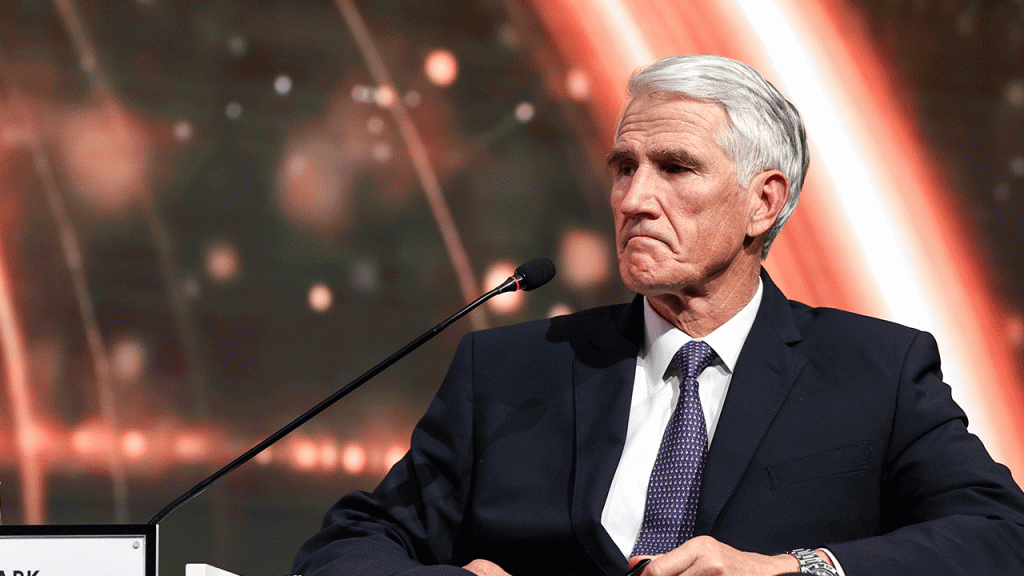A significant military event unfolded recently as President Donald Trump announced U.S. air strikes on three key Iranian nuclear facilities, marking a decisive action in ongoing tensions with Iran. Retired U.S. Army Brig. Gen. Mark Kimmitt expressed his astonishment at the strikes, emphasizing the clever tactics utilized by the Trump administration. Kimmitt’s reflections and the President’s declaration raise important questions about future U.S. military and diplomatic strategy in the region, as well as the potential ramifications for U.S. forces stationed abroad.
| Article Subheadings |
|---|
| 1) Overview of the Military Strikes Against Iran |
| 2) Analysis of Kimmitt’s Reaction and Insights |
| 3) The President’s Address on Military Objectives |
| 4) Potential Response from Iran and Regional Implications |
| 5) Legislative Concerns Over Military Engagement |
Overview of the Military Strikes Against Iran
On Saturday, President Trump announced that the U.S. military conducted air strikes targeting significant nuclear sites in Iran, which are believed to directly contribute to the country’s nuclear enrichment endeavors. The strike involved a precision attack on three facilities, namely Fordow, Natanz, and Isfahan, that have long been under scrutiny for their role in Iran’s nuclear program. Trump characterized the strikes as a “spectacular military success,” rendering these nuclear facilities “totally obliterated” and effectively neutralizing a considerable threat posed by Iran, which he labeled as the “world’s number one state sponsor of terror.”
Analysis of Kimmitt’s Reaction and Insights
In an interview following the strikes, retired Brigadier General Mark Kimmitt expressed both admiration and intrigue concerning the operational tactics employed by U.S. forces. Kimmitt remarked, “I‘m fascinated and, candidly, I‘m impressed. The strategies executed reflect a sense of deception and trickery—much akin to high-stakes negotiations in real estate.” His comments indicate a deeper appreciation for the strategic thinking behind the military action, suggesting that the seemingly ambiguous nature of U.S. tactics was not only effective, but perhaps critical in avoiding a broader conflict that could lead to American casualties.
The President’s Address on Military Objectives
During a brief address at the White House, Trump elaborated on the objectives behind the military strikes. He stated that the U.S. aimed to eradicate Iran’s nuclear enrichment capacity and preempt further advancements in their nuclear arsenal. He underscored the reality that, despite the significant damage inflicted, Iran remained a formidable adversary. His declaration contained a dual message—celebrating the military success while simultaneously implying a shift in the diplomatic landscape, marking this as an opportunity for Iran to reconsider its stance and pursue peace negotiations.
Potential Response from Iran and Regional Implications
Despite the initial success of the strikes, it is crucial to anticipate Iran’s potential responses in the wake of this military action. Kimmitt warned of Iran’s capacity for retaliation through proxy networks, which remain active and capable of conducting attacks against U.S. interests and allies in the region. “They should be very concerned,” Kimmitt cautioned, citing the presence of numerous Iranian-backed militias, particularly in Iraq. These militias could present a dangerous threat to U.S. assets and forces in the region, leading to increased tensions and instability.
Legislative Concerns Over Military Engagement
Alongside the military developments, there has been notable pushback within Congress regarding the President’s action. Lawmakers are invoking a new war powers resolution to challenge Trump’s strikes on Iran, citing concerns related to constitutional authority related to military engagement. Though the President aims to position the United States as a country that will maintain peace through strength, many political figures fear such unilateral military actions may set a concerning precedent and lead to prolonged conflicts without proper legislative oversight.
| No. | Key Points |
|---|---|
| 1 | The U.S. carried out military strikes on three pivotal Iranian nuclear facilities. |
| 2 | Retired Brig. Gen. Mark Kimmitt praised the tactical deception used in the strikes. |
| 3 | President Trump announced the military success while urging Iran to pursue peace. |
| 4 | Potential retaliation from Iranian-backed groups poses risks for U.S. interests in the region. |
| 5 | Congress is exercising its oversight with a pushback against the military action. |
Summary
The recent air strikes on Iranian nuclear sites signal a significant military operation aimed at curbing nuclear threats from Iran. Retired Brig. Gen. Mark Kimmitt has spotlighted the strategic finesse behind the strikes, while President Trump has positioned these actions within a broader peace initiative. However, concerns over potential Iranian retaliation and legislative oversight reflect the complexities involved in this high-stakes geopolitical arena, indicating that the balance between military action and diplomatic negotiations will remain a critical focus in the region moving forward.
Frequently Asked Questions
Question: What were the targets of the U.S. air strikes in Iran?
The U.S. air strikes targeted three key Iranian nuclear facilities: Fordow, Natanz, and Isfahan, aimed at disrupting Iran’s nuclear enrichment capacity.
Question: What did Brig. Gen. Mark Kimmitt say about the strikes?
Brig. Gen. Mark Kimmitt expressed his admiration for the strategic deception employed, viewing it as a clever and effective military tactic.
Question: What are the implications of this military action for U.S. forces in the region?
The potential for retaliation from Iranian-backed militias poses significant risks to U.S. troops and interests in the Middle East, necessitating heightened vigilance and security measures.


